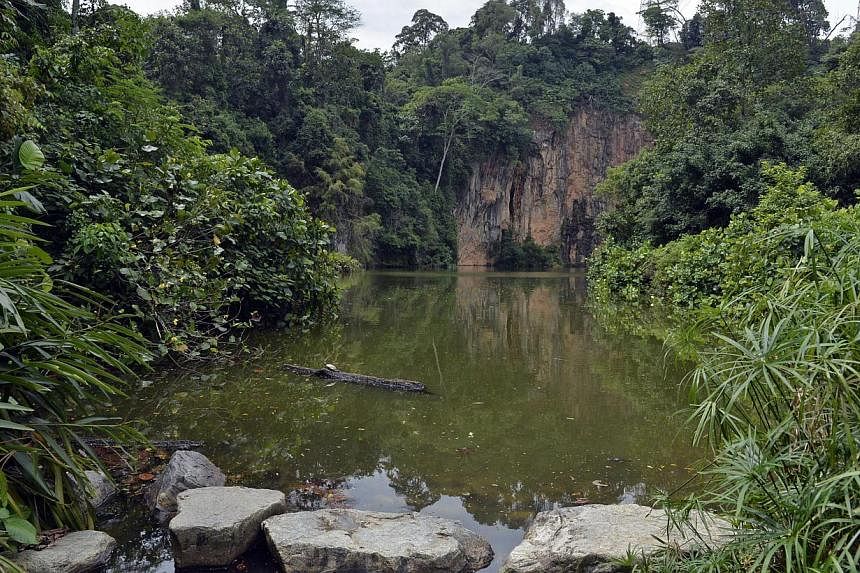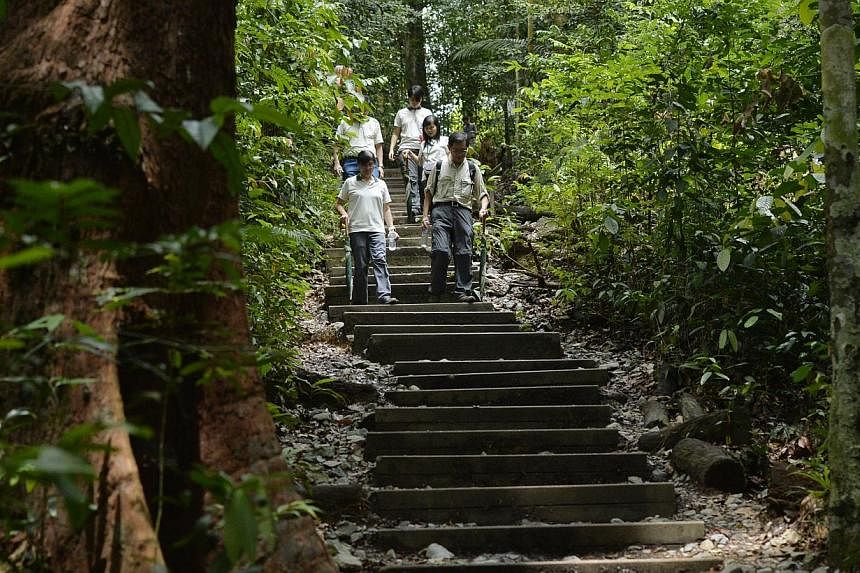This article was first published on June 2, 2014, and was updated on Oct 22, 2016.
After being closed for two years of restoration works, Bukit Timah Nature Reserve was fully reopened to the public on Saturday (Oct 22).
Following its complete closure in September 2014, the reserve was partially reopened to visitors on weekends earlier this year in April. With Saturday's full reopening, nature lovers can now visit all the reserve's hiking trails seven days a week.
It was the first time that the 163ha reserve was closed for repair, as trails, slopes and amenities in the park needed to be repaired and upgraded. We look at five things about the only hill dipterocarp forest in Singapore.

1. When did the nature reserve first open?
The Bukit Timah Nature Reserve was officially opened in 1992, although the rich biodiversity within the reserve spans further back.
In 1822, Dr Nathaniel Wallich, Superintendent of the Calcutta Royal Gardens, was the first to collect plants at the reserve. Years later, in 1854, naturalist Alfred Wallace collected beetles.
In 1937, Bukit Timah Nature Reserve was one of three forest reserves that were retained in a period where economic pressure for land development caused other reserves to be de-gazetted. The other two that were retained were in Pandan and Kranji.
2. What are the highlights at the reserve?
Bukit Timah Nature Reserve is the only hill dipterocarp forest in Singapore. This is unique as such a forest type usually occurs in regions that are 300 metres to 762 metres above sea-level.
The Nature Reserve also contains Singapore's tallest hill - the Bukit Timah Hill - that stands sentinel over the area at 163m.
It also contains at least 40 per cent of Singapore's native flora and fauna even though it makes up less than 1 per cent (0.2 per cent) of the country's area. It is home to animals such as the Plantain Squirrel, the Greater Racket-tailed Drongo and the Singapore Freshwater Crab - a very rare species of crab that can only be found in Singapore.
3. What are the key milestones?
The Bukit Timah Nature Reserve and the Central Catchment Nature Reserve once comprised a single forest fragment. They were separated when the Bukit Timah Expressway (BKE) was completed in late 1986.
A bridge to re-connect both reserves to aid in the dispersal of forest plant seeds was completed in late 2013.
In 2011, the reserve was designated as Singapore's second Asean Heritage Park after meeting criteria such as ecological completeness, representativeness, naturalness, high conservation importance and being a legally gazetted area. The first Asean Heritage Park was the Sungei Buloh Wetland Reserve in 2003.
4. How long was it closed for and which parts of the reserve were being worked on?
It was closed from September 2014, partially opened from April this year and finally fully opened on Saturday (Oct 22).
During the first six months of repair, the reserve was closed to the public as works commenced on its Main Road leading from the Visitor Centre to the summit of Bukit Timah Hill.
From April 4 this year, the reserve was open to the public on weekends. It was closed on weekdays and on public holidays which did not fall on the weekend.
However, entry to the reserve was only via Hindhede Nature Park, and the public was advised to take public transport, as there was limited parking lots due to restoration works. The reserve remained inaccessible through Dairy Farm Nature Park as trail repair works continued at Dairy Farm Loop.
The first phase of the two-year renovation project took place in the first six months, and included slope stabilisation works between Keruing Hut and Simpang Hut.
Trail repair works were also done at the Summit Path, which will now have steps of two different heights, to cater to visitors with different needs.
Phase two of the renovation project included slope stabilisation at two other locations, trail repairs and enhancement of visitor amenities including the Visitor Centre.
5. What are some of the new/improved features after the facelift?
New features that both protect the natural habitat and enhance visitors' experience include boardwalks over swampy areas, rope handrails along some stretches of the trails, and a non-slip trail surface made of a porous mixture of soil and a synthetic polymer that allows rainwater to reach roots underneath.
Weak slopes have also been reinforced using various methods, including micropiles driven into the soil and biodegradable geotextile netting covering the slope that allows plants to grow through.
Where possible, slopes have been allowed to recover naturally through the accumulation of leaf litter and natural regrowth, while it is helped along in other places by planting saplings of native species salvaged from other parts of the reserve.







